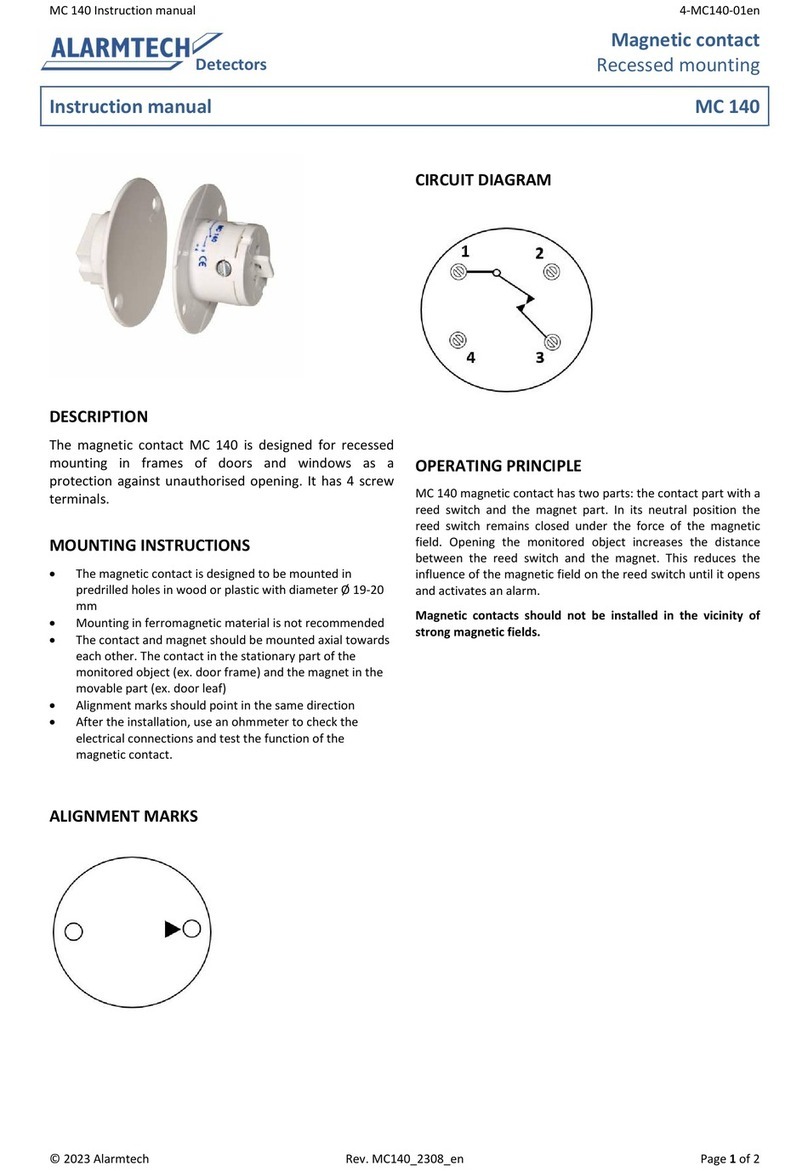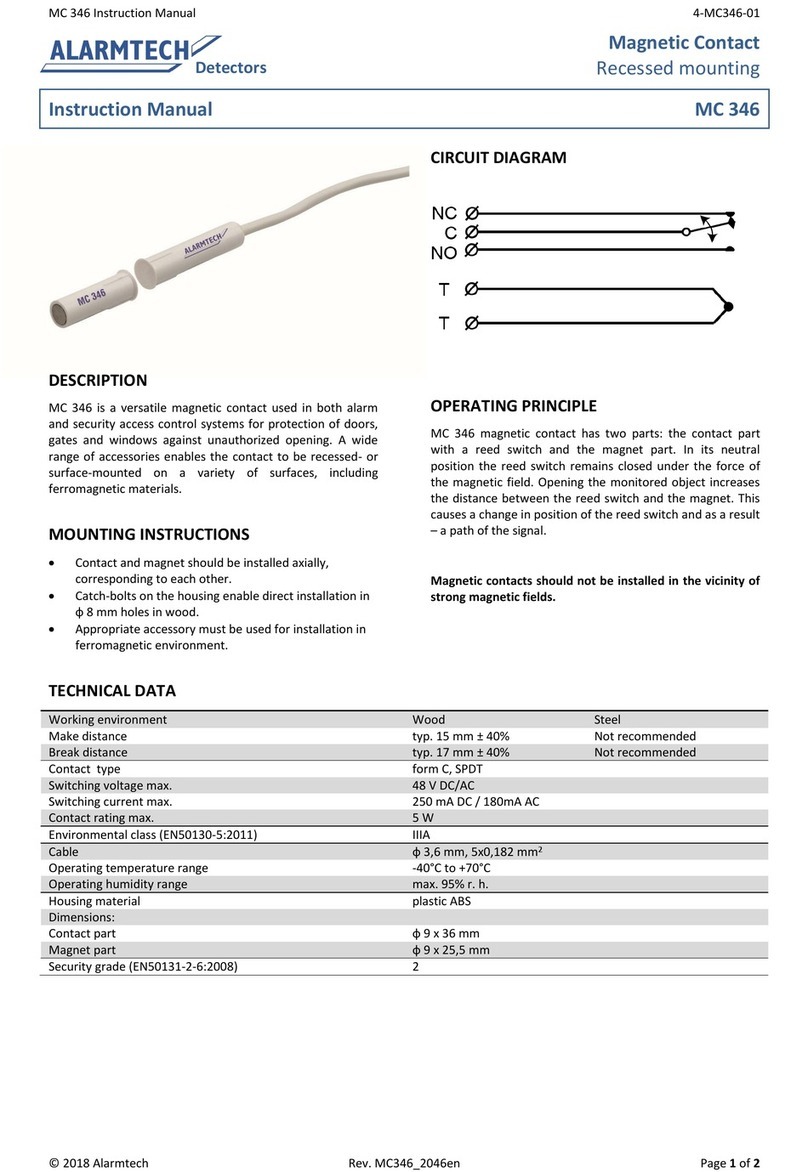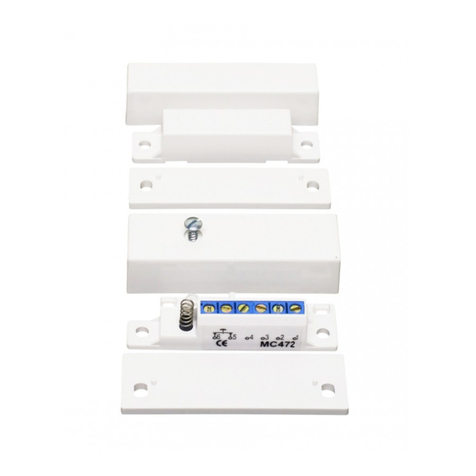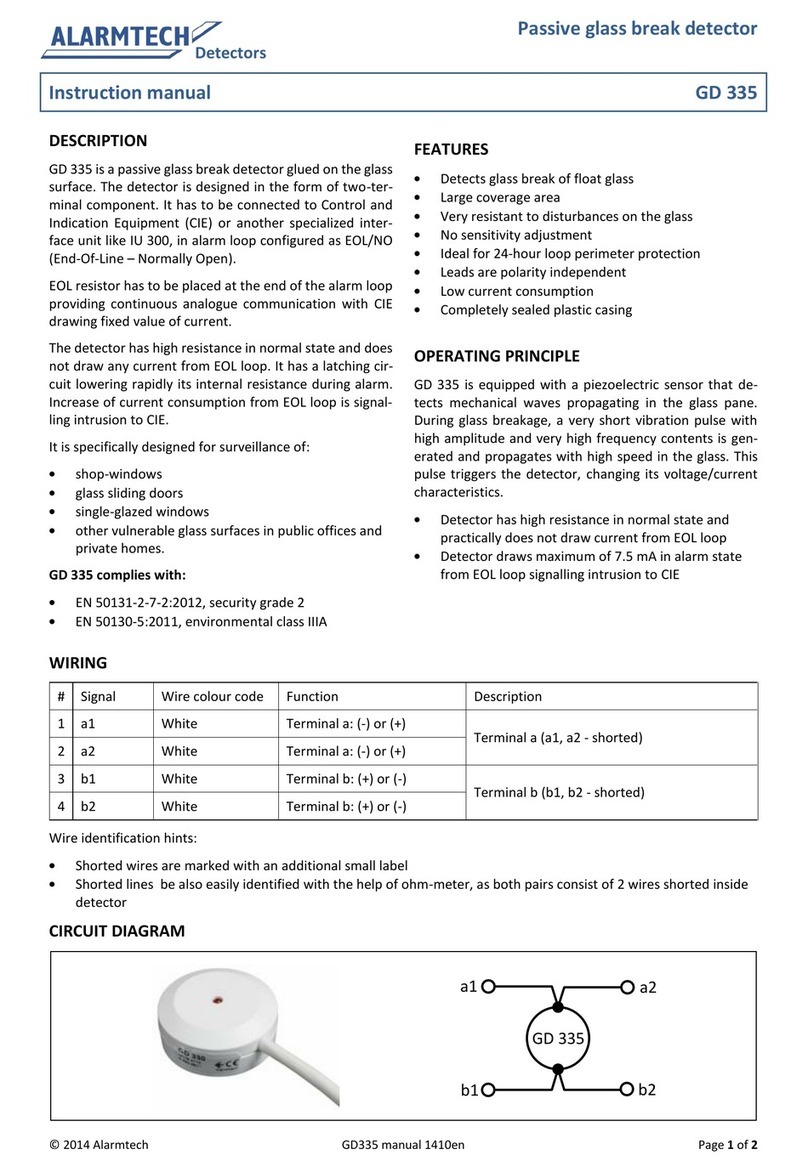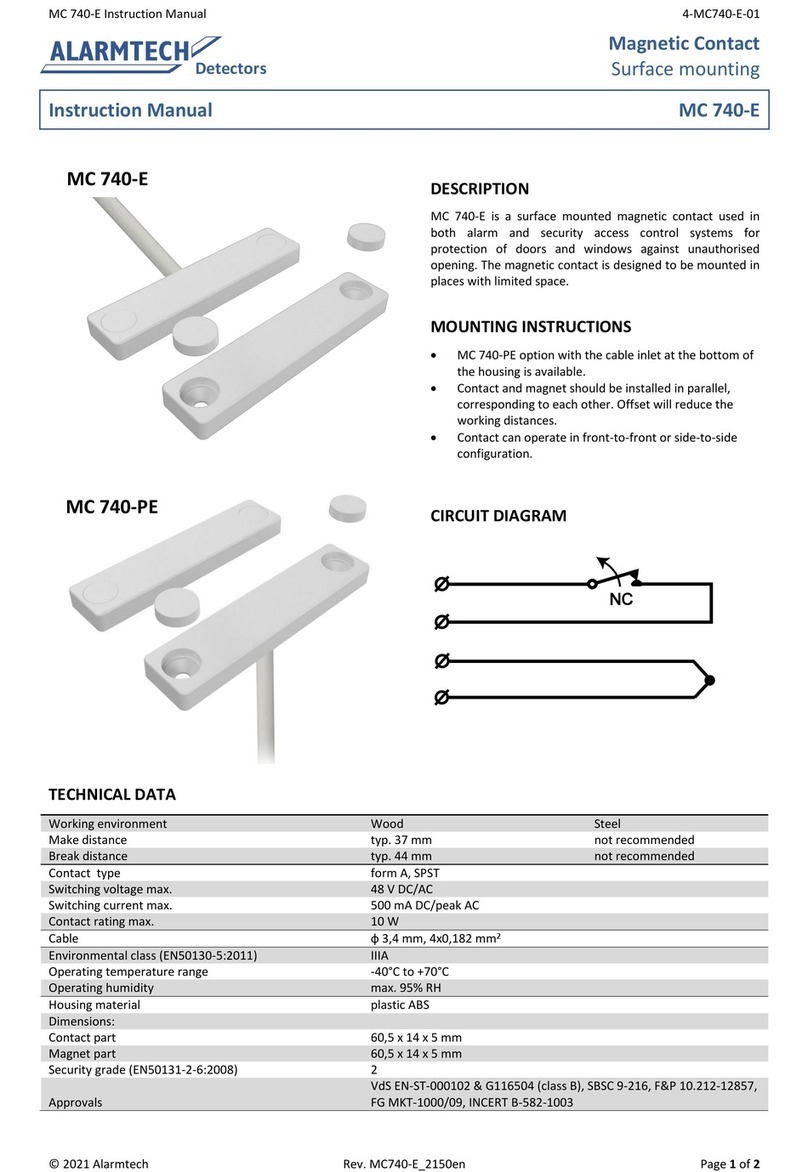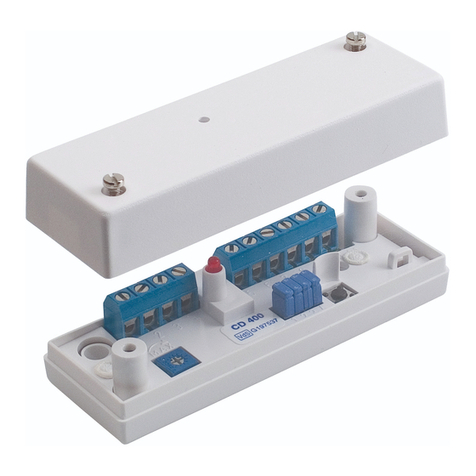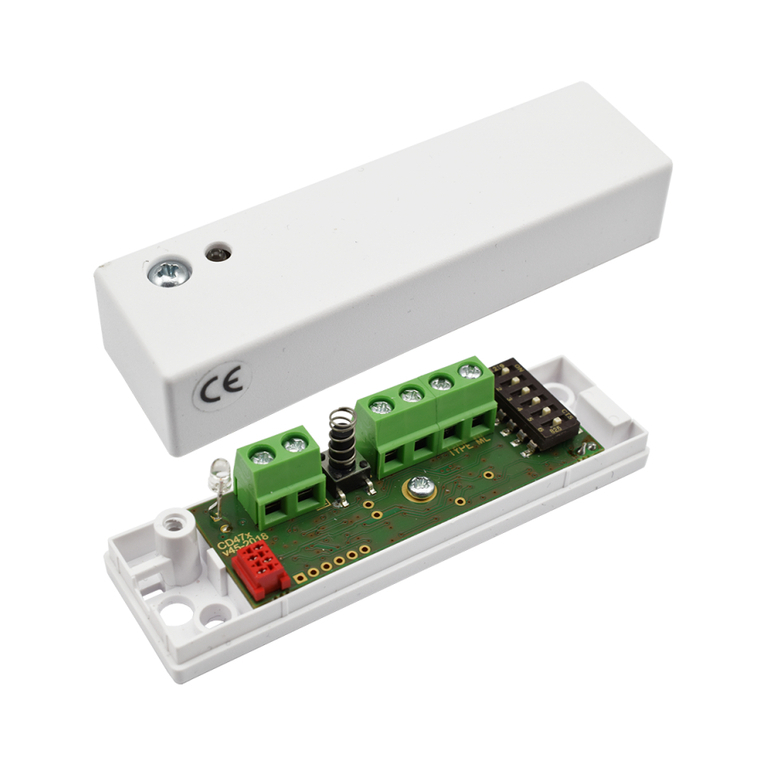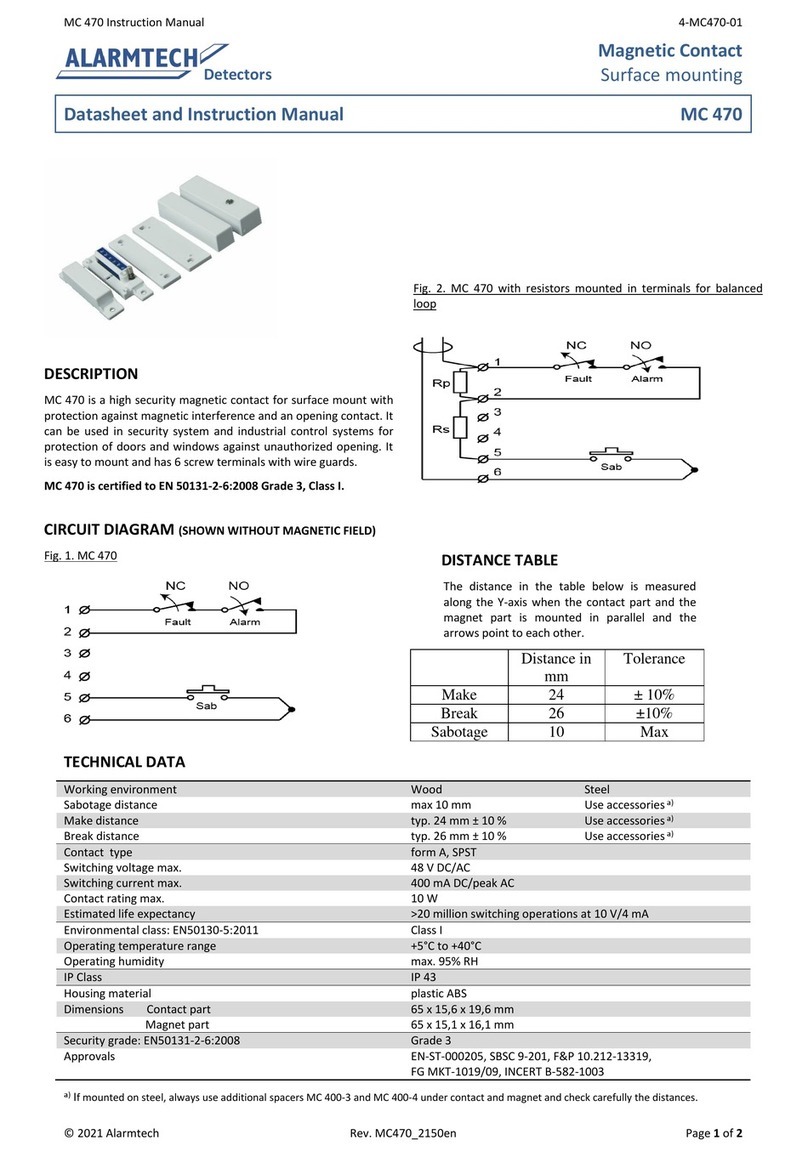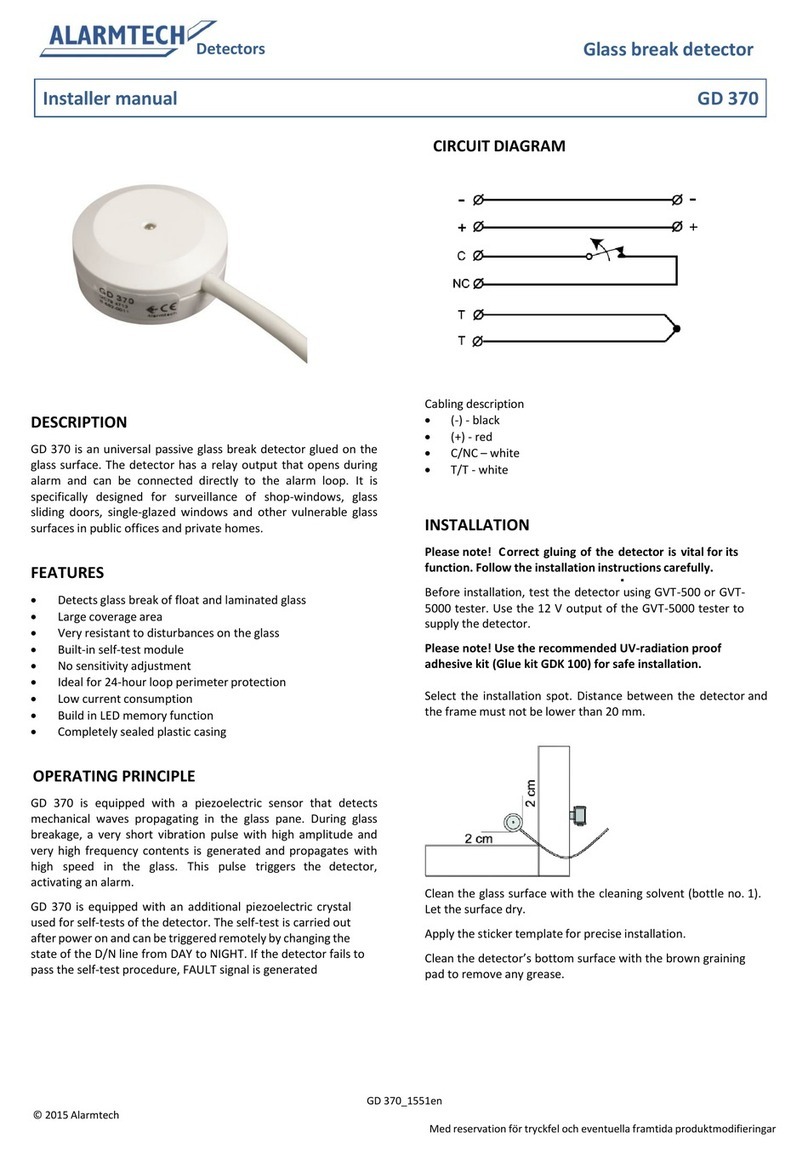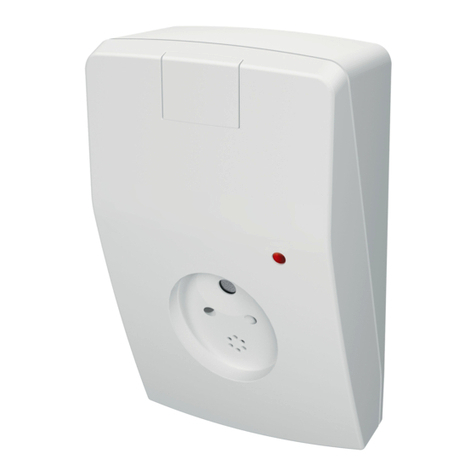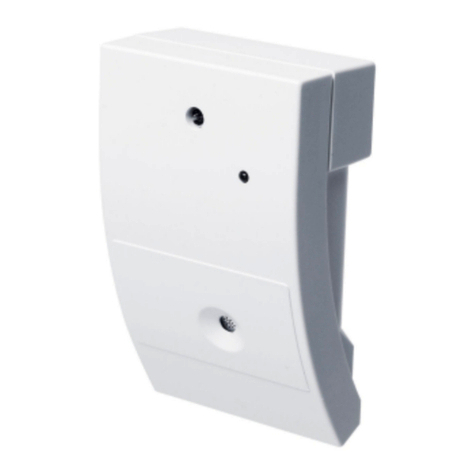© 2020 Alarmtech www.alarmtech.se Alarmtech reserves the right to changes CD470 manual 2003en Page 1of 2
DETECTORS
Chock- and vibration detector
DATASHEET AND INSTALLATION MANUAL CD 470
DESCRIPTION
CD 470 offers reliable monitoring against attacks with me-
chanical tools. The CD 470 is a chock- and vibration detec-
tor with 3 separate detection channels: an integration
channel / saw channel for weak signals with long duration,
a counting channel that senses strong impact on the mon-
itored surface and an explosion channel which senses very
strong signals from e.g. an explosion.
CD 470 shares design with CD 475 but has built-in relays
for the alarm and tamper outputs. This allows the GD 470
to be connected directly to the alarm central unit, this
means that no analyser unit is necessary.
CD 470 polarity independent, just like CD 475.
FEATURES
Relay outputs for alarm and tamper
Two wire polarity independent for easy connection
3 separate detection channels
Cover radius up to 3m
Resistant to interference
Detailed sensitivity setting
Suitable for 24 hour monitoring
DAY and NIGHT control of LED
OPERATING PRINCIPLE
The CD 470 uses a piezoelectric sensor to monitor the vibration
signature of the mounting surface that occurs when it is crushed
or cut with tools. The signal has a special signature with a broad
spectrum and high amplitude that the electronics detects, then
opens the alarm relay and illuminates the LED. The CD 470 has a
built-in self-control and voltage monitoring. Fault is indicated by
a flashing LED (alarm relay remains closed). The indication is con-
trolled by a DAY and NIGHT function. With 8Vdc on the power
input, DAY mode is active and LED lights up at alarm and with
pulsating shine in case of failure. At 6Vdc, NIGHT mode is active
and LED is switched off in case of alarm or error.
Resetting the detector after alarm can be done in two different
ways:
Disconnect power to the detector
Switch from DAY to NIGHT mode
MOUNTING
1. Loosen the screw for the cover and lift it off.
2. Select the mounting location and mark the mounting holes
with the bottom part as a template.
3. Drill with a 2-2.5 mm drill for the two supplied mounting
screws.
NOTE! A clean and smooth mounting surface under the
detector provides maximum range.
CONNECTIONS
The detector has 6 screw terminals:
